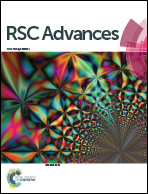Density functional study of Li/Na adsorption properties of single-layer and double-layer antimonenes
Abstract
β-Antimonene, a stable two-dimensional material, has been successfully prepared recently. Experiments have demonstrated β-antimonene's excellent Li storage properties. Based on first-principles density functional theory (DFT), the adsorption properties of Li/Na atoms on single-layer antimonene (SL-Sb) and double-layer antimonene (DL-Sb) have been studied. The optimal adsorption position of Li/Na atoms on SL-Sb is the V site with an adsorption energy of 1.91/1.46 eV. With the increase of Li adsorption density, the crystal structure of the antimonene changes significantly. The optimal adsorption position of Li on DL-Sb is the V2 site in the interlayer with an adsorption energy of 2.71 eV, and that of Na is the V1 site outside the surface with an adsorption energy of 1.72 eV. With the increase of the adsorption density of Li, the antimonene presented a trend of forming an alloy. Whereas with the increase of Na adsorption density, the antimonene retains its original structure. The diffusion barrier of Li/Na atoms on the SL-Sb surface is 0.22/0.13 eV, and outside the DL-Sb surface is 0.25/0.15 eV. In short, DL-Sb can maintain a stable structure with a large Li/Na storage density; the diffusion barriers of Li/Na atoms on antimonene are relatively low, which is beneficial to the rapid insertion/extraction.



 Please wait while we load your content...
Please wait while we load your content...